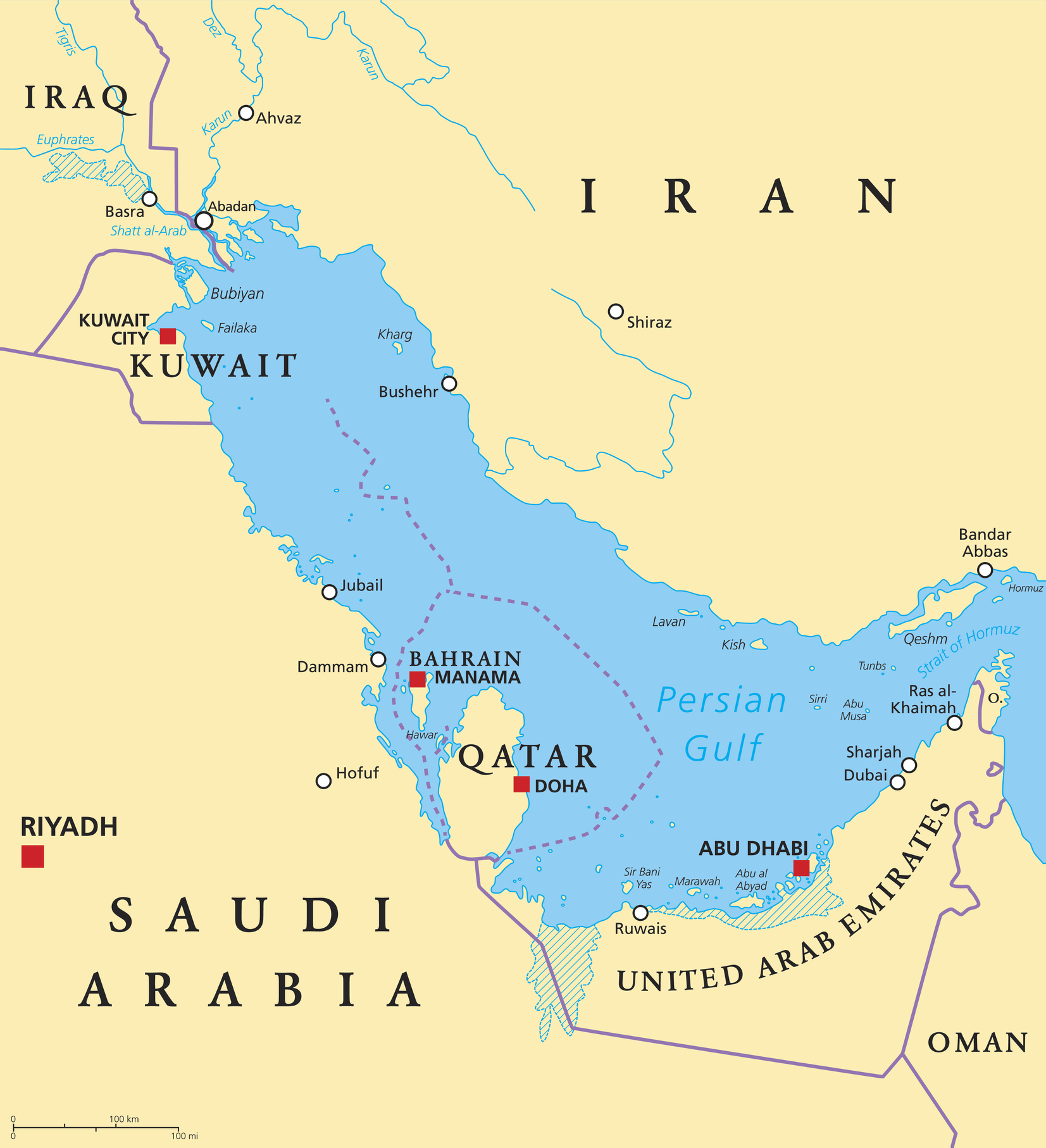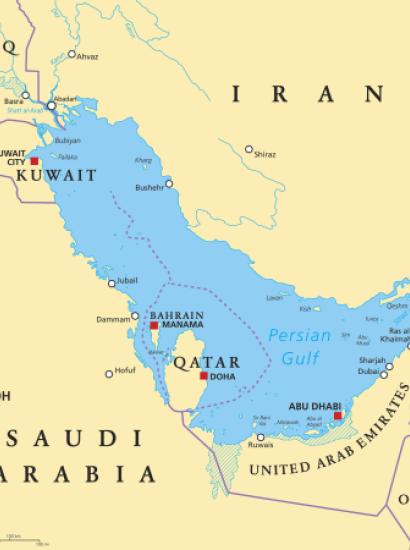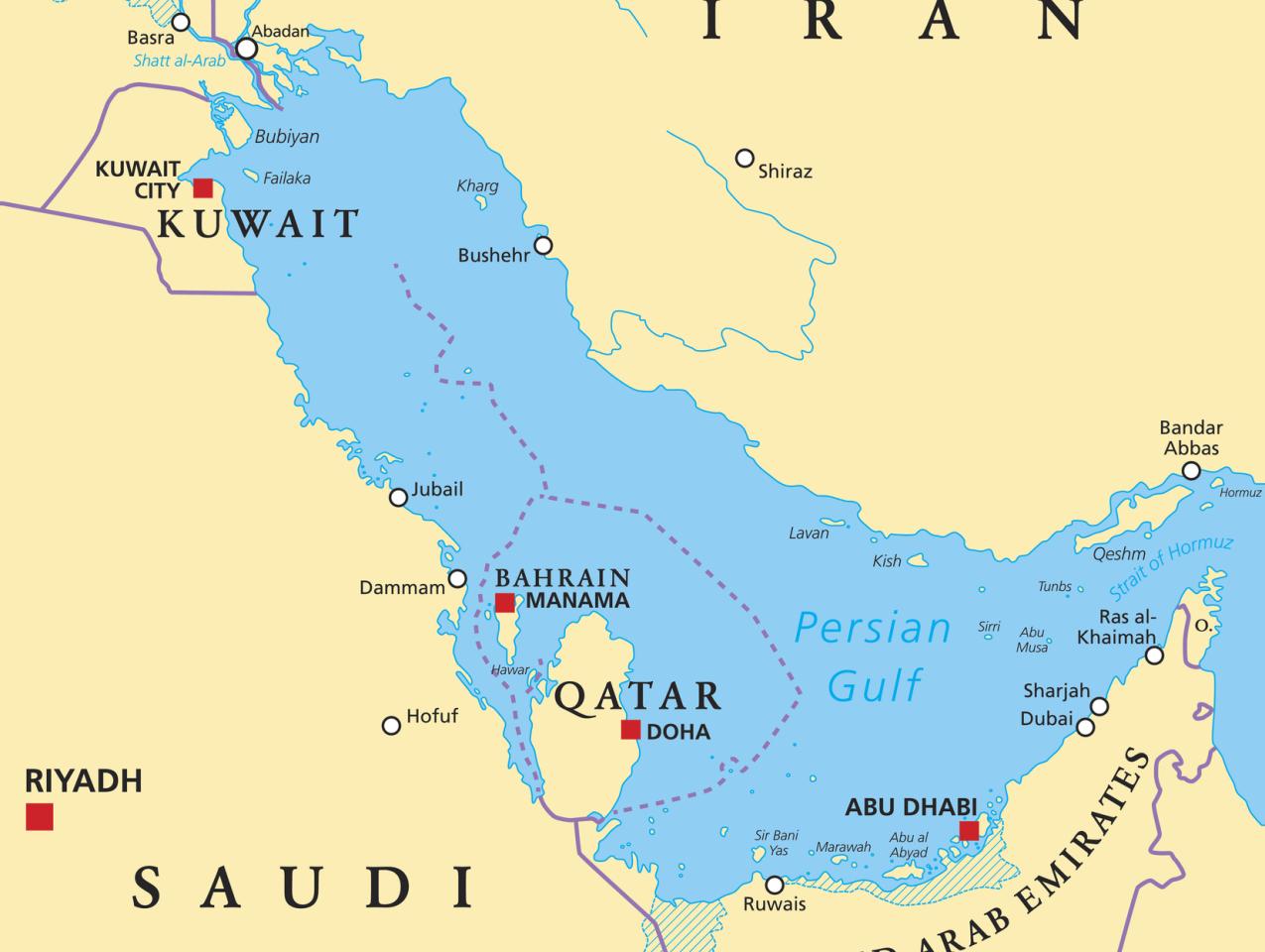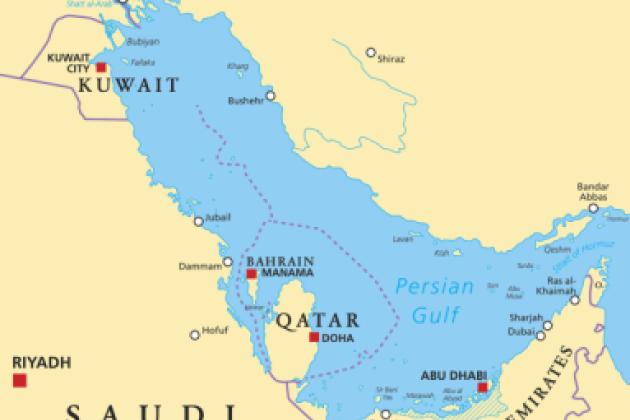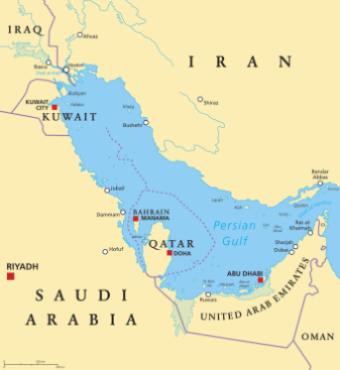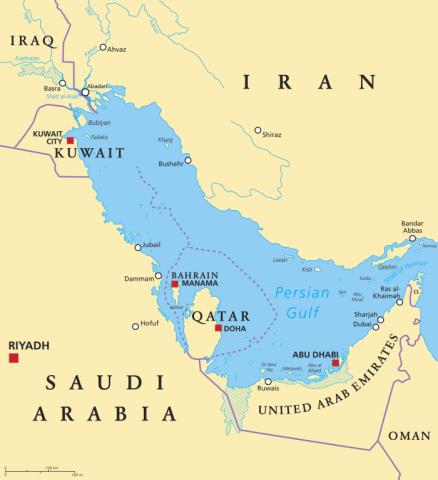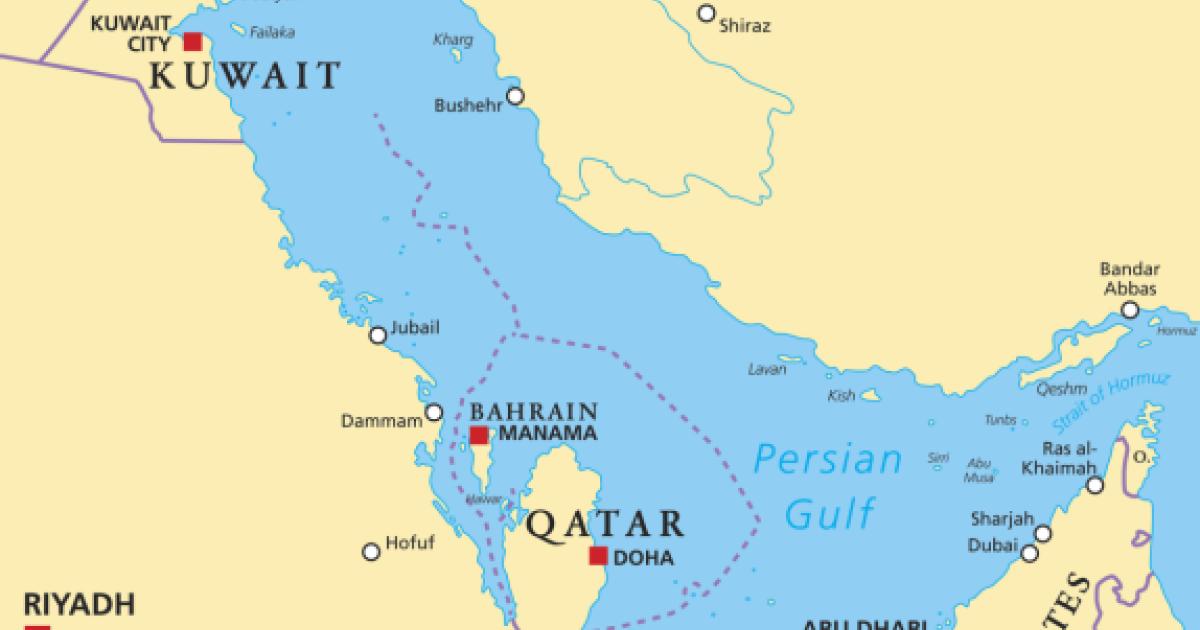In 1973, six months after the Yom Kippur war, Saudi Arabia announced on behalf of the OPEC oil producers‘ cartel a four-fold increase in the world price of oil. The announcement was a major shock to the world economy at the time and since has had lasting effects both on the global economy and foreign policy developments of major nations.
The developed industrial economies were quickly cast into a recession, and the largest, most sudden transfer of liquid wealth began taking shape from leading world financial centres to OPEC oil producing states. New foreign policy challenges emerged for the US, Europe, Japan and countries of the Middle East. At first these changes appeared quickly but over time they have evolved into a long-term transformation of the entire region from the eastern Mediterranean through the Middle East, the Persian Gulf, to the Indian Sub-Continent, South Asia and China.
Saudi Arabia was the largest and most immediate beneficiary of the oil price increase. Revenues began coming in by April, 1974 of more than $100 million each day and continued for years. Within five months the Saudi Arabian Monetary Agency (SAMA), Saudi Arabia’s Central Bank of Issue was being warned by several of its 18 major international commercial banks that they would not be able to continue to take deposits from SAMA on this scale. Their balance sheets would become overburdened with Saudi risk. After all, Saudi Arabia was classified at that time as a poor developing country, isolated in the great Arabian desert. Although large in size and rich with oil, its population was only approximately six million, with a large part of it Bedouin nomads spread thinly across the great deserts. Further, Saudi Arabia was governed by an absolute monarchy, a deeply conservative Wahhabi Islamic regime.
Suddenly Saudi Arabia was flooded with dollar liquidity in a world plunging into recession. Saudi Arabia itself was booming. Ships were lined up for sixty miles in the Red Sea waiting some six months each for access to the port of Jeddah to unload their cargoes of cement, steel, vehicles and equipment. Communications were difficult and access to Saudi Arabia remained limited by land and air.
Meanwhile the outside world and global financial markets waited impatiently to see what the Saudis would do with their massive new liquidity. The hope was that Saudi Arabia would engage world markets responsibly and begin what was referred to around the world as “recycling their dollars” and saving the world from a major depression.
Nine months after the beginning of the large dollar inflows of April, 1974, King Faisal of Saudi Arabia invited two leading international investment banks from New York and London to visit the kingdom for conversations with Saudi financial authorities about finding the right solution for Saudi Arabia to engage with world financial markets.
The investment banks were both small private firms with extensive experience in world financial markets. One firm was White, Weld & Co. Inc. of New York and London, and the other was the long-established London merchant bank, Baring Brothers. Agreement was quickly reached with the Saudis that the two firms would enter into a long-term contract with the Government of Saudi Arabia to provide a joint team of six investment banking professionals to live and work in Saudi Arabia for a minimum period of five years, during which they would serve as “independent“ advisers to SAMA, lent (seconded) to the kingdom by their home firms in New York and London to work for the Government of Saudi Arabia. The first and highest loyalty of the advisers would be to SAMA and the Government of Saudi Arabia.
The advisers were to be committed to advising SAMA on its investments and to helping create a modern and comprehensive investment management function at SAMA. (Note: I served as Senior Adviser and Head of the advisory team for nine years from November, 1974 to the end of 1983).
As Saudi Arabia established its investment program it emerged into global prominence as both a political and financial force. By 1977 it had created a broad-based investment program that made it a world class player. With reserves of over $200 billion it had become the largest holder of marketable government bonds on all major developed country bond markets in the world.
It had negotiated multi-billion-dollar private placement programs with the governments of virtually all major developed countries in dollars as well as their respective national currencies. Private loan placements were also being negotiated with top ranked multi-national corporations and in some cases with provincial or state level governments such as in Canada.
SAMA had also established large and diversified equity portfolios managed by leading institutions in each of the world’s main currency zones. It also established multi-billion dollar investment programs with the World Bank and all other regional development banks, as well as with the IMF to support its developing country adjustment policies lending programs. In early 1981 SAMA negotiated the largest ever private placement ($13 billion for 13 years) directly with the IMF for its new extended loan facility, which also included moving Saudi Arabia into the sixth largest capital position in the IMF and provided Saudi Arabia with its own permanent IMF Executive Board seat, in effect making Saudi Arabia the world leader of developing nations. Saudi Arabia also founded and funded in 1978 the new Islamic Development Bank.
In the same period the government of Saudi Arabia developed its own national grants programs for politically friendly Islamic countries in the Middle East, North Africa, the Persian Gulf, Pakistan and other Islamic countries of that region. Pakistan was a notable relationship in those years because of its financial needs and its advanced efforts to create its own nuclear weapon.
Finally, it should be noted that throughout the late 1970s and in the years since, Saudi Arabia has maintained its position as “The Keeper of the Holy Places of Islam”, and each year has hosted on an expanding basis the annual Muslim world event of the Haj (the Pilgrimage for the Muslim faithful) to visit Mecca and Medina.
Throughout this period of Saudi global financial investment and its commitment to financing domestic infrastructure growth as part of its national economic renewal program (not to mention the acquisition of sophisticated weapons of all kinds, mainly from the US), Saudi Arabia became a primary location for attracting workers off all kinds from a multitude of Islamic countries in the region and beyond. These workers, many of whom settled in Saudi Arabia provided vital support to the Kingdom’s social and economic development bringing in doctors, technical staff, office staff and administrators, teachers in huge numbers (mainly Egyptians) and port and construction workers. When one considers workers from Egypt, Syria, Iraq, Iran, Lebanon, Ethiopia, Eritrea, Yemen, Pakistan, India, Bangladesh, Indonesia and Nigeria, one begins to understand the magnitude of change brought forward into Saudi Arabia and the region by this diversity, by Saudi Arabia’s vast wealth and established influence in the world of energy investment and global political affairs.
By the early 1980s Saudi Arabia had firmly established itself as a rising regional power and internationally as a major player in world markets. It was a large and completely separate source of capital available to important borrowers in world markets and to seekers of equity investment. Saudi Arabia had established direct relations and its own access to the world’s leading markets and in doing so was having a profound influence on the global wave of deregulation of global capital markets that ultimately transformed our modern global economy. It did not make direct loans to indebted developing countries. Instead, it depended on its deposits in the world banking community to serve as the basis for banks to make the necessary credit judgements to on-lend Saudi resources to developing countries, especially in Latin America. Saudi Arabia meanwhile created with the United States the joint US-Saudi Economic Commission which met bi-annually and served as a major conduit for Saudi Arabia’s purchase of US weapons. By this time, it was also managing its own large bilateral aid or grant program to regional Islamic states and neighbors. And importantly, these things were done with minimal publicity and virtually no “fanfare”.
In the years following the oil price shock of 1973, there was only limited expansion of Saudi ties east of the Persian Gulf. This is not surprising given the fact that Saudi nationals were not encouraged to frequently visit their eastern neighbors along the shores of the Persian Gulf. These states were far more liberal than the austere Wahhabi regime in Saudi Arabia. At that time there was no causeway bridge to the gulf states supported by a Saudi visa exit and re-entry program that would open easy access to the Gulf states, where the glittering world of alcohol and exciting night life were widely available.
The Gulf Cooperation Council was formed in Riyadh only in 1981 to promote closer relations with Persian Gulf countries. Hence, it took time for more open relations and better access to develop. The construction of the causeway road between Saudi Arabia and the Persian Gulf countries was completed in 1986. Gradually the informal barrier of the Persian Gulf to the east, the world of India, South Asia and East Asia became more accessible.
Indians and Bangladeshis began to populate the Gulf in large numbers and also Saudi Arabia. As of 2019, the number of India’s world diaspora was 17.5 million, more than double the number twenty years earlier. More than half, 9.3 million, have migrated to the Persian Gulf countries. Significantly, the top three host countries, as of 2019 for Indian diaspora were UAE with 3.4 million, the USA with 2.7 million, and Saudi Arabia with 2.4 million.[1]That these migrations show signs of permanence is suggested by the fact that a major Hindu temple complex, including a Hindu cultural center and extensive sports facilities, is being built today in Abu Dhabi to serve the Hindu population of the Persian Gulf region.
Thus, in the years immediately after the oil shock of 1973 and the deep conservatism of Islam in Saudi society, it is not surprising that the much more liberal policies of the Persian Gulf states, should have acted for a number of years as a soft barrier for Saudi Arabia to access the Sub- Continent, South Asia and China. This barrier has now been swept away with India and its large diaspora moving steadily into the entire Gulf region, including Saudi Arabia, with new links appearing on economic and political fronts. More recently, China has begun reaching out to Saudi Arabia and there are rumors that perhaps Saudi Arabia may buy Russia’s S-400 missile defense system to replace the US missile defense system that Saudi Arabia has deployed for many years with only moderate success against missiles fired by Yemen on Riyadh.
In the past 15 years the sweep of diplomatic activity, trade and worker relations, high tech cooperation and exchange (between the US, India and Israel for example) mark evidence of new movement across from the Sub-Continent through the Persian Gulf to Egypt, Israel, Turkey, the Eastern Mediterranean and Europe. Palestine is now so noticeably out of step that we see new trade and diplomatic alignments emerging from the Gulf to the Middle East, including Israel. These developments would have been unthinkable a few years ago but today relations are changing more rapidly. Prince Mohammed of Saudi Arabia is reaching out in the region and Prime Minister Modi of India launched a major diplomatic initiative by making the first ever visit by an Indian Prime Minister to Israel in 2017. This was followed by a return visit by Israel’s Prime Minister seven months later as a special guest honoured on India’s National Republic Day. These visits followed two decades of quiet and judicious cooperation between India and Israel going back to the turn of the century. It was early in the 2000’s that the US encouraged India and Israel to work quietly together on shared interests. They found numerous areas of common interests, including areas of high-tech intelligence cooperation and business opportunities. Some areas such as defense equipment and high-tech opportunities with security implications, were helpful to the US as it rebuilt its defence relations with India following the damage done by sanctions imposed by the United States in the period 1998 - 2001, following India’s testing of a nuclear weapon in 1998. US sanctions on India were lifted in late 2001 and by 2005 the US and India had launched the historic US-India Civil Nuclear Treaty initiative that transformed US-India relations. At the same time, India’s economy broke through its longstanding growth barrier of 5% p.a. to record annual average growth of 7-8% for the next 14 years, placing India at the top of the world growth ladder for emerging countries. India’s economy opened further to foreign direct investment (FDI) from a widening group of smaller countries as well as to the US and Europe. India’s own FDI outflows also rose sharply during the same period.
Crown Prince Mohammed bin Salman of Saudi Arabia paid an official visit to New Delhi in February 2019 and India’s Foreign Minister Jaishankar made a follow-on visit to Israel in October 2021 to expand India’s dialogue beyond security issues to discuss and announce the formation of a tri-lateral and multi-lateral dialogue with a larger group of regional countries. The Foreign Minister’s agenda included free trade negotiations and discussions of common issues in the health care sectors. A quadrilateral economic forum between India, Israel, the US and UAE was announced to expand economic and political cooperation in the Middle East and Asia. No mention was made of Palestinian participation.
Clearly important and transformative changes are taking place on a growing scale across the entire Middle East, East Mediterranean, Persian Gulf areas and beyond to India, and South and East Asia. This great arc of territory and diverse peoples and cultures has ancient historic roots and growing shared interests today that are clearly evolving in important ways.
The themes being explored by Hoover’s Middle East Workshop are profound and important to evolving developments across this entire region over the past 40x years. More depth of study and analysis, together with informed future orientated thinking will be essential to an understanding of future regional developments.
1These numbers are drawn from a book soon to be published by Adele Hayutin at Stanford University and the Hoover Institution.







